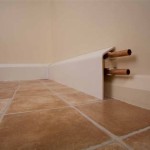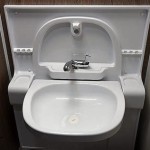How To Regrout Your Bathroom Tile
Over time, bathroom grout can become discolored, cracked, or moldy. This not only affects the aesthetics of your bathroom but also poses a health risk. Fortunately, regrouting your bathroom tiles is a relatively easy and affordable DIY project. This article will guide you through the process, providing step-by-step instructions and helpful tips to achieve a beautiful, clean, and long-lasting finish.
Step 1: Prepare the Bathroom
Before starting the regrouting process, it's crucial to prepare the bathroom for the project. This includes clearing out the area, protecting surrounding surfaces, and removing the old grout. Here’s how:
- Clear the area: Remove all items from the shower or tub, including towels, toiletries, and any decorative items.
- Protect surrounding surfaces: Cover nearby surfaces like countertops, cabinets, and floors with plastic sheeting or drop cloths to prevent grout from staining them.
- Remove the old grout: Use a grout removal tool to carefully scrape out the old grout. Work slowly and avoid damaging the tiles. If the grout is particularly stubborn, you can use a grout saw or a rotary tool with a grout-removing attachment. For moldy grout, be sure to wear a mask and gloves for protection.
- Clean the tile and grout lines: Once the old grout is removed, thoroughly clean the tile and grout lines with a grout cleaning solution or a mixture of baking soda and water. This will ensure that the new grout adheres properly.
Step 2: Mixing the Grout
Choosing the right type of grout is essential for achieving an aesthetically pleasing and durable finish. Epoxy grout is more durable and resistant to stains and moisture, while sanded grout is a more budget-friendly option for wider grout lines. Here's how to mix the grout once you've made your choice:
- Read the grout manufacturer's instructions: Grout mixing ratios can vary depending on the brand and type. Carefully follow the instructions on the grout packaging for optimal results.
- Pour the grout into a clean bucket: Use a clean bucket or container to mix the grout. Add water slowly, gradually incorporating it into the grout powder until it forms a smooth, spreadable consistency.
- Mix the grout thoroughly: Use a drill with a paddle attachment or a grout mixer to mix the grout until it's completely blended. Don't overmix, as this can affect the grout's consistency and strength.
- Allow the grout to sit for 5-10 minutes: After mixing, let the grout sit for 5-10 minutes to allow the air bubbles to dissipate. This will prevent the grout from cracking later.
Step 3: Applying the Grout
Applying the grout requires a steady hand and careful attention to ensure it is evenly distributed. Follow these steps for a professional-looking finish:
- Apply the grout with a grout float: Use a grout float to apply the grout to the grout lines, pressing it firmly into place. Tilt the float at a 45-degree angle and work the grout into the joint.
- Wipe away excess grout: Once the grout lines are filled, use a damp sponge to wipe away excess grout. Work in small sections and wring out the sponge frequently to prevent excess water from diluting the grout.
- Let the grout cure: Allow the grout to cure according to the manufacturer's instructions. This process can take anywhere from 24 to 72 hours.
- Seal the grout: After the grout has cured, use a grout sealer to protect it from stains and moisture. This will also make it easier to clean in the future.
Step 4: Finishing Touches
Once the grout has fully cured, you can apply the final touches to achieve a flawless bathroom tile finish. Here’s what you should do:
- Clean the tile and grout: After the grout has dried, clean the tiles and grout lines with a damp sponge or a grout cleaning solution. This will remove any residual haze or film.
- Apply grout stain or colorant: If desired, you can apply a grout stain or colorant to achieve a specific color or enhance the existing color.
- Enjoy your newly regrouted bathroom: That's it! You've successfully regrouted your bathroom tiles. Enjoy your newly refreshed space and the beauty of your freshly regrouted bathroom tiles.

How To Regrout Bathroom Tile In 5 Easy Steps True Value

How Do I Know If Need To Regrout My Shower The Grout Medic

How Do I Know If Need To Regrout My Shower The Grout Medic

How To Easily Regrout Your Bathtub Walls Without Removing Old Grout Noting Grace

Can I Regrout My Shower Floor Here Are 3 Reasons You Should Not The Grout Medic Of Central New Jersey

Regrouting Company In Central New Jersey The Grout Medic

Great Home Project How To Regrout Your Tile

How To Regrout Tile In Your Kitchen Bathroom And Beyond

Tile Regrouting Services Perfected The Grout Medic

Before You Renovate Consider Regrouting First The Grout Guy
Related Posts







